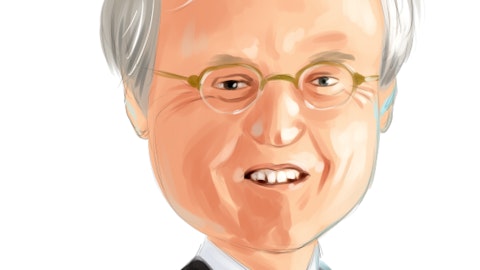Yasmeen Rahimi: Thank you Scott. Just a clarification question. Given that you hope to have the data, I guess in the first half of 2025, can we assume that the study will be a one-year duration or–rather than six months, or a little premature to make these long assumptions on our end?
Scott Harris: Well, the primary end point of the study will be read out at 24 weeks, or six months, and we’re making a decision about whether to continue to follow a patient for other parameters, such as safety or the non-invasive markers, for a longer period of time, and that decision is being made right now. But assuming we get the trial commenced midyear this year and the time period that we anticipate will be necessary to accrue the requisite number of patients, and then the 24-weeks of treatment follow-up, we think that a first half 2025 data readout is very realistic.
Yasmeen Rahimi: Great, thank you so much, and really the best of luck as we’re headed in the next few weeks. Thank you again.
Operator: Thank you. One moment for our next question. Our next question comes from the line of Roger Song from Jefferies.
Roger Song: Great, thank you team for taking our questions. A quick one from us. One, given the pleiotropic effects from pemvidutide, can you guys just lay out what are the key targeted populations you want to address, particularly for example for the obesity plus/minus, NAFLD versus NASH, maybe some other comorbidities pemvidutide that are better or worse positioned to address? If you can give us some details in terms of the numbers, that would be very helpful. I will have a follow-up question after that. Thank you.
Scott Harris: Hey Roger, and good morning. There is a great deal of overlap between the obesity population and the NASH population. It’s estimated that 50% of obese patients have NAFLD and virtually all NASH patients, at least in the United States, have obesity, and it’s known that they share similar comorbidities. NASH patients at their terminal stages of liver disease die of liver disease, but they predominantly die of the cardiovascular complications, and therefore it’s important when you treat the NASH patient to treat not only the process going on in the liver but also the obesity as well, to have a meaningful impact. We also think that doctors, when they prescribe to patients, will pick drugs for the treatment of NASH that also offer weight loss, not only because they believe it’s so but because patients also want it.
I’d point out that in the NASH space, we believe that we’re the only drug that has effective interventions on both NASH inflammatory and fibrotic activity at the end of the trial, but also weight loss. When you’re looking at the obesity population, clearly right now in its early stages of the marketplace and development, people are looking at one thing – they’re looking at the percentage weight loss. That would be nice if insurance companies were looking at that as well. We note that the primary dose of tirzepatide that’s being prescribed right now is not the 15 milligram dose but the 5 milligram dose – it gives you an idea of the kind of weight loss that prescribers and patients might want right now, and despite the fact that tirzepatide had a higher percentage weight loss than semaglutide in clinical trials, that semaglutide is being prescribed quite nicely.
Our projection for the percentage weight loss is actually greater than semaglutide at 24 weeks, but we think in terms of the target product profile, what will it include, it will include meaningful weight loss, meaning as Vipin pointed out, in that 15% to 20% range, although at the end of 48 weeks, although we think that based on our Phase I study results, we can achieve more than that. We believe a successful target product profile would include that as a base case. We think it’s important that it also be replete with the treatment of the comorbidities that are ultimately going to drive prescriptions and insurance approvals, such as reduction in serum lipids, reduction in hepatic fat, meaningful reductions in blood pressure which we’re achieving, unlike some other compounds in development, with only minimal increases in heart rate.





